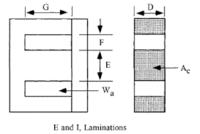electronic4india
Newbie level 4
hello friends ,
i trying to calculate push - pull smps in excellent IT software. but software need the max flux density . how to calculate max flux density or what is flux density ?
size of the core - 42*21*15 .
i trying to calculate push - pull smps in excellent IT software. but software need the max flux density . how to calculate max flux density or what is flux density ?
size of the core - 42*21*15 .
Last edited by a moderator:
